Description of species and varieties of poplar

In the modern world, the ecological situation is getting worse - landfills are formed and the air is rapidly polluted, so greening is becoming more and more fashionable. Private and public companies create parks, alleys and gardens filled with a variety of trees. Poplar is one of the most popular plants - it grows very quickly and is effective for air purification. A wide variety of species of this tree allows you to bring to life the most interesting landscape designs.
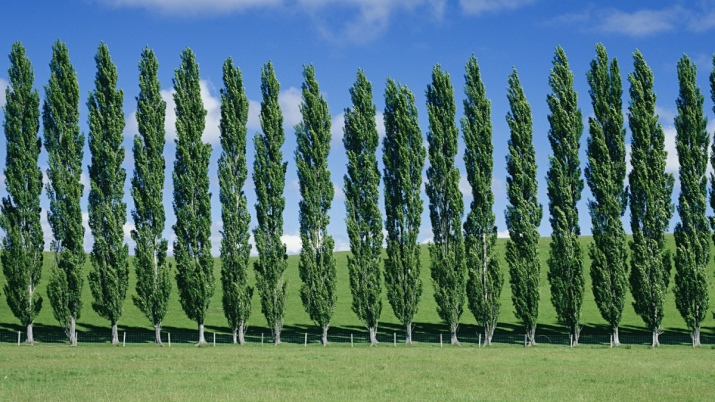
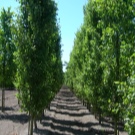

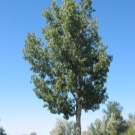
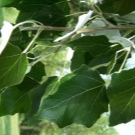
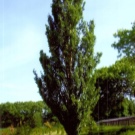
Overview of popular species
Poplars belong to the Willow family and include at least 90 species. Trees are very popular for planting in cities - along roads, in parks and alleys. This is due to the high growth rate, which lasts for the first 35-50 years, as well as a varied beautiful crown shape. Poplar, depending on its variety, is columnar, spherical, almond-shaped or ovoid. The leaves of trees are most often oval or lanceolate; on their surface, reticular venation is easily distinguishable. Plates grow quite densely, leaving a good shadow under the crown.
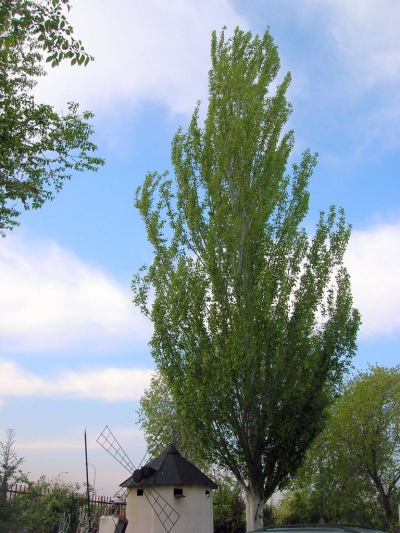
The lifespan of representatives of the Willow family is quite long - the average age of trees is 50-80 years, but quite often there are centenarians who are at least 140 years old. Many varieties reach a height of 40 meters, and the trunk is often at least 1 meter in diameter. The roots of giants usually do not penetrate deep into the ground - they grow superficially and extend beyond the borders of the crown.
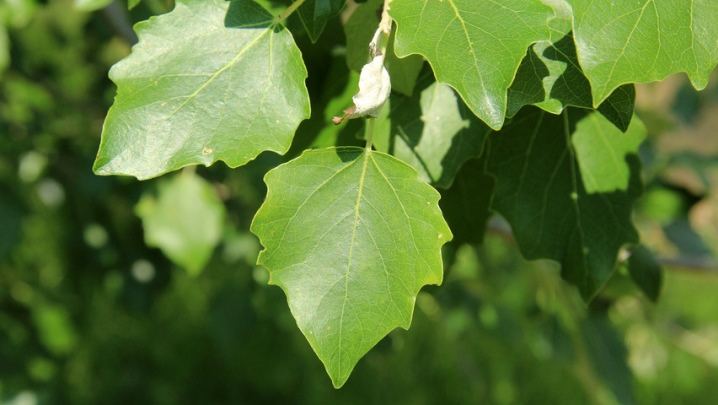
Trees from this family can differ significantly from each other, each species has its own name. Most of the varieties are created by nature, but there are also hybrid ornamental plants developed by professional dendrologists.
In this article, we will look at several varieties of poplar, which will help you choose the most suitable option for planting in a private sector, park or other place.
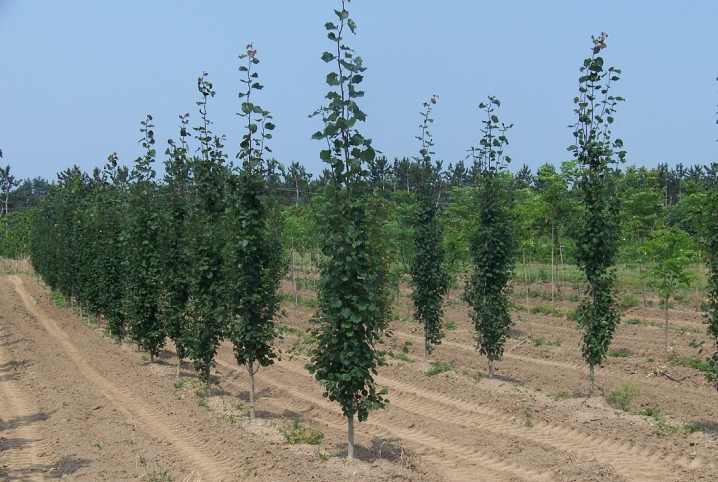
Silver
Plants in this category have several names - "silvery", "white", "snow white" or "Bolle". Most often, such trees are found in Europe and Asia. Silver poplar has a very long lifespan - this figure varies from several decades to four centuries. The height of the tree usually does not exceed 30 meters, which compensates for the sprawling spherical crown. Bolle's trunk is quite thick, from 2 to 3 meters in volume, but at the same time short - the branches begin to separate at the level of 2 meters from the ground.
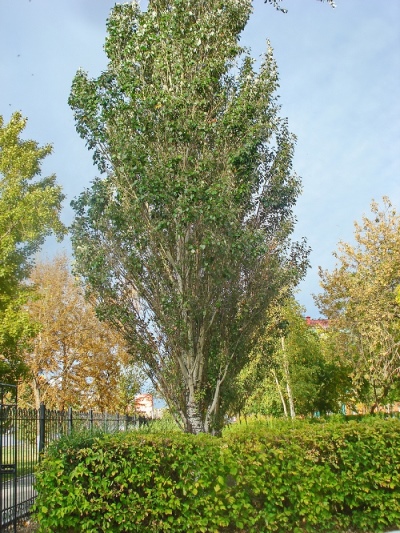
The snow-white giant is covered with a smooth gray or gray-olive bark. There is a white bloom on new young branches, and very few leaves grow on the shoots. On an old poplar, light shades of gray and green turn into jet black.
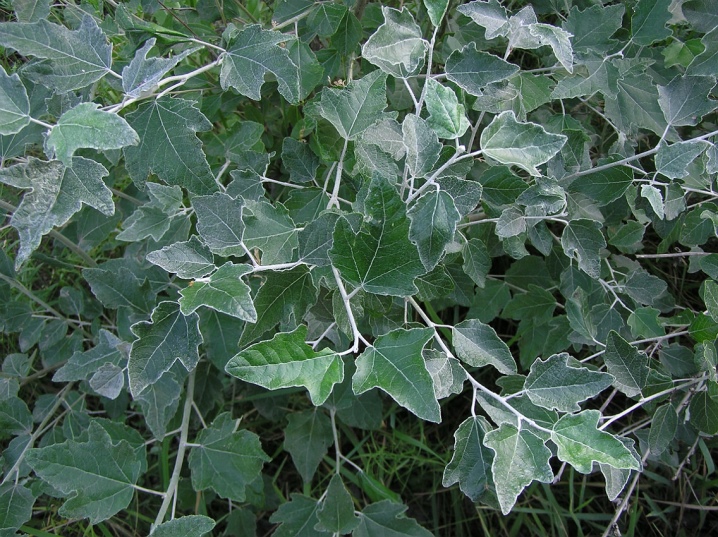
There are two types of buds on the tree. On young shoots, they are sticky and create juicy sticky foliage, their size is no more than 0.5 cm in length. And on old branches, the buds are just as small, but at the same time dry and smooth, without a sticky coating.
The crown of the white giant is pyramidal or spherical. Deltoid leaves grow on the branches - they have a green tint on top, and the lower part is painted in a whitish-silver color. Thanks to the silvery color, the giant got its name; in landscape design, this shade looks very interesting and unusual.
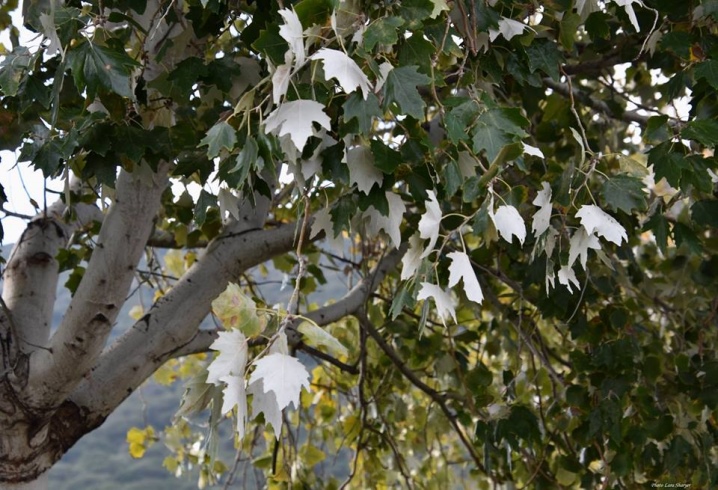
During the flowering season, the branches of the plant are covered with earrings - long double thick inflorescences. On female trees, future seeds are light yellow and 12 centimeters long, and on male plants the inflorescences are dark red or brown up to 7 centimeters long.

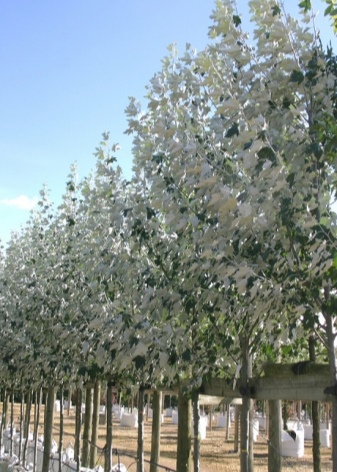
When the inflorescences fade, the fruits begin to ripen on the earrings - they look like a dense, dry brown box. Seeds ripen inside - small brown blades with fluffy cobweb-like cotton wool in the lower part. After the seeds ripen, the box opens, and then the wind picks up the weightless poplar fluff and carries it far from the silvery tree. The seeds most often germinate many kilometers from the parent tree. Bolle blooms in late spring, and the seeds ripen and begin their aerial journey in late June or early July.
White giant seeds are more likely to sprout when female and male plants are close to each other.

Deltoid
Deltoid trees grow to gigantic sizes - 40-45 meters in height. The crown is very spreading and wide, ovoid or pyramidal in shape. The giant's trunk has a huge volume, not less than 2.5 meters for an adult representative.
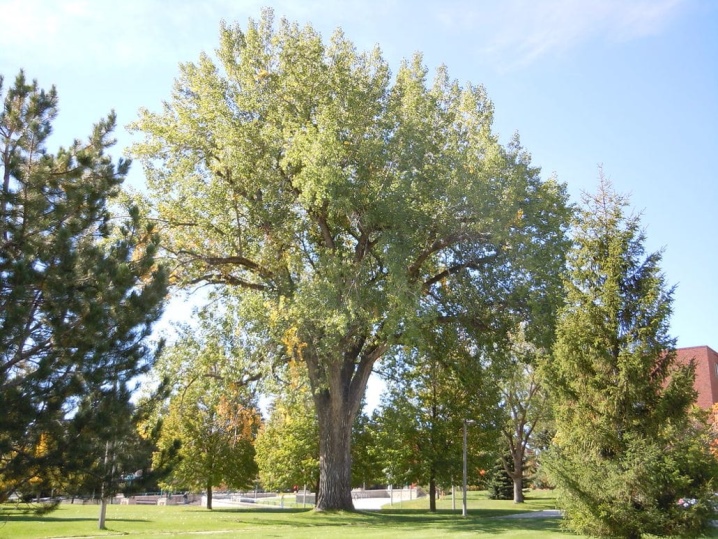
The leathery cover of a young tree is ribbed, painted in a brown-green hue. In old deltoid poplars, the bark becomes ash-green and covered with rough cracks.
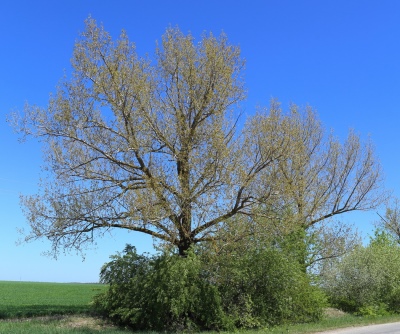
From the sticky buds, rounded deltoid leaves from 3 to 8 cm in size bloom. The color of the plates is dark green above, and light green below. The leaves are attached to the branches with a long handle, from which the serrated edge of the leaf begins.
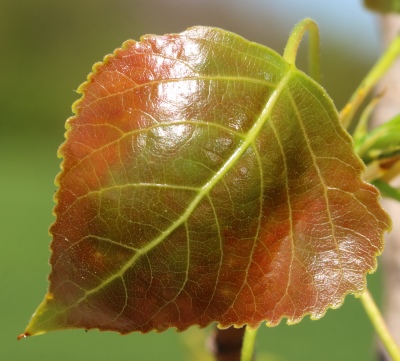
Reproduction of the giant occurs with the help of poplar fluff, which ripens in a variety of boxes located on the inflorescence.
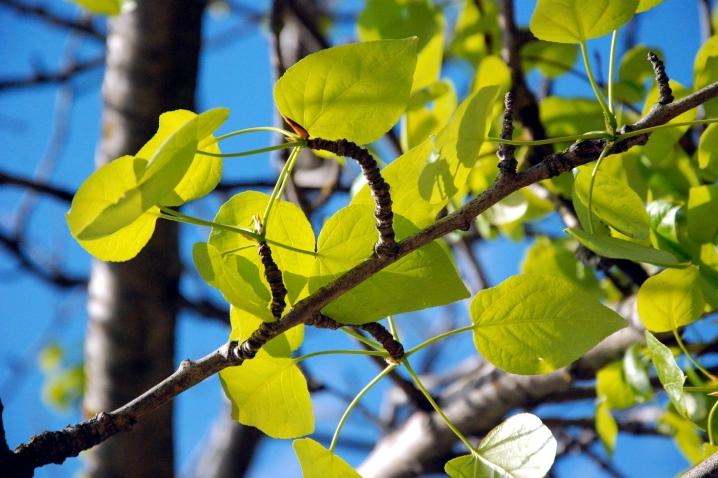
Black
The tree, whose area is widespread in Ukraine, Belarus and Russia, is called black poplar or sedge. The plant can be safely called the powerful lungs of the planet, because it very actively converts carbon dioxide into oxygen. Due to these properties, wild carp is used in urban greening - it is planted in squares, artificial deciduous forests and parks.
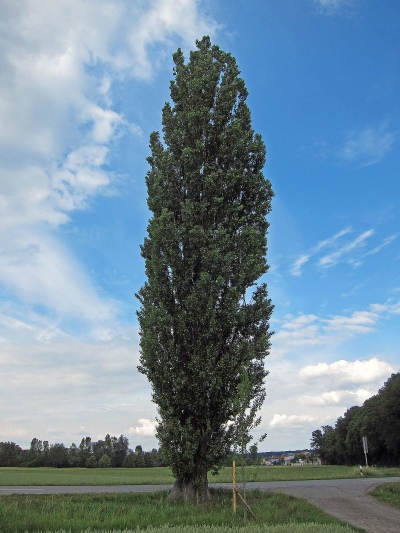
The amount of oxygen released by the black plant is 3 times the productivity of linden. To process the same amount of carbon dioxide as one poplar, you need to plant at least 10 pine trees. Moreover, throughout the summer, each member of the Willow family cleans the air from about 20 kg of dust.

The wild boar is a long-liver; it can live from 70 to 300 years. In the first few decades, the tree reaches its maximum height - 30-35 meters. Aging poplars are gradually covered with outgrowths on the bark, becoming shapeless and dumpy. The trunk is wide and powerful, covered with rough, almost black bark.
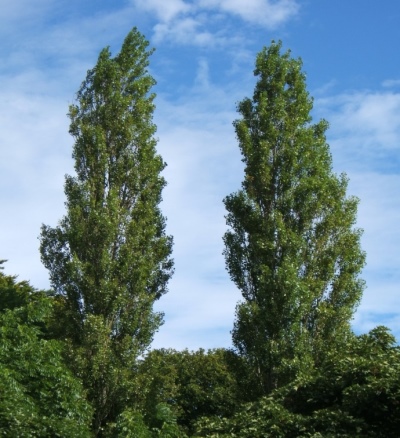
The buds of sedge are rather large, sticky, round in shape and covered with light scales; during growth, they are closely pressed against the covering of the branches. Leaves bloom from the buds, resembling a large triangle or rhombus in shape, they are quite tough to the touch. Each leaf is attached to the branch with a small flattened petiole.
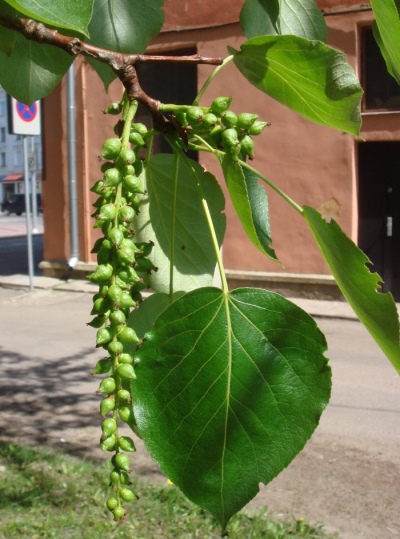
It is easy to distinguish between male and female wild boar during the flowering period, because lush long inflorescences of a yellowish and red-brown hue appear on the plants. Female poplars bloom longer and more lush inflorescences than male ones.
Representatives of the poplar family bloom in late spring, and the fluff is scattered in the middle of summer. The big plus of this plant is its fast growth rate and unpretentiousness, in addition, in many countries, beautiful bright earrings have earned the love of numerous fans.

Fragrant
Trees of this type grow 19-28 meters from the ground, branches are located at an angle of 70 degrees to the trunk. This structure gives the hat a regular oval shape, the volume of spreading branches is 15 meters. The skin on young sprouts is smooth, yellow or greenish-gray. After maturation, the bark becomes rough and cracks with deep furrows.
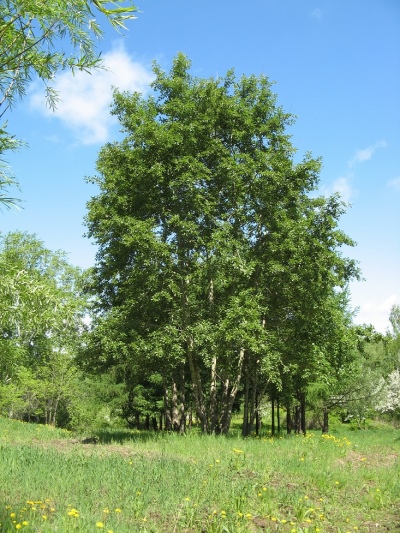
Fragrant poplar is unpretentious to living conditions - it lives well both in black soil and in clay soil. The tree is frost-resistant, but loves humid air - a prolonged lack of moisture is detrimental to this variety.
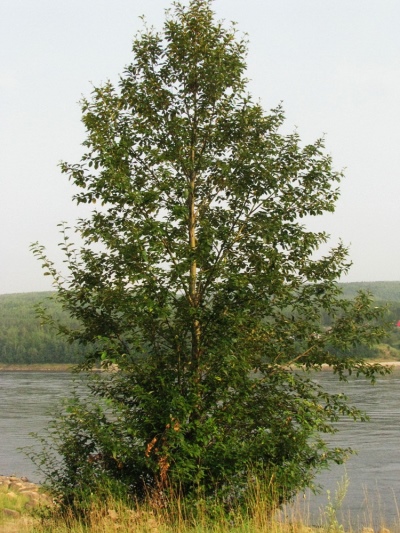
The foliage on the plant is strong and large - it is 5-11 centimeters long and up to 6 centimeters wide. The dense cover of the plate is colored with a greenish tint at the top, while the bottom is dominated by a silvery gray color. The length of the leaf petiole is 2-4 centimeters and it is covered with a light downy.
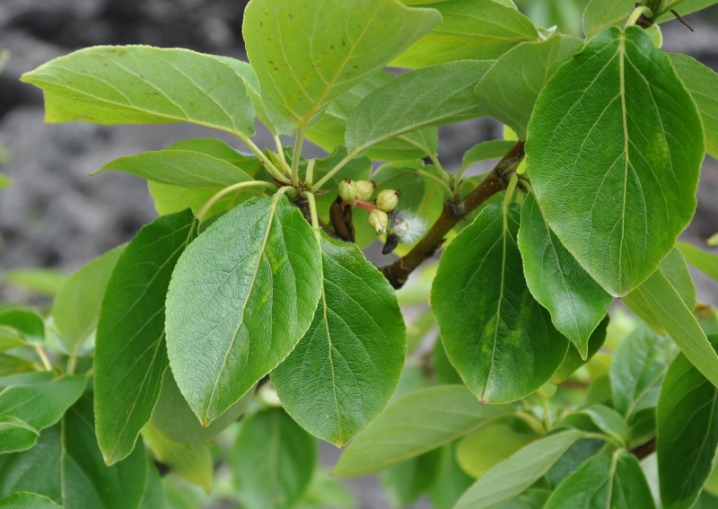
Fragrant poplars bloom at the same time as the buds open, the maximum flowering occurs in the middle of the first month of summer. The male plant produces small red inflorescences, their length is about 2 centimeters. A female tree grows earrings 6-7 centimeters long, and rare flowers form on them. Ripe fruits have an elongated oval shape and 4 valves. Reproduction takes place by seeds with fluff or green offspring.
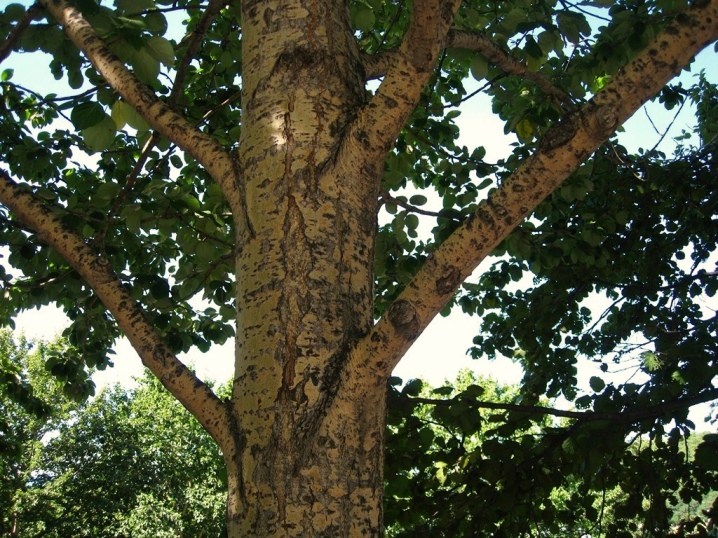
In its natural environment, a fragrant poplar can live up to 220 years, but it does not take root well in a city - most often the tree dies after 22-35 years of life.
Pyramidal
Trees of this species bear 2 names - "pyramidal" and "columnar", they are very fond of sunlight. Huge plants reach 35-40 meters in height, they also live for a long time - from 70 to 350 years. The pyramidal poplar is widespread in Europe and Asia: in Italy, Ukraine, Belarus, Russia and Kazakhstan.
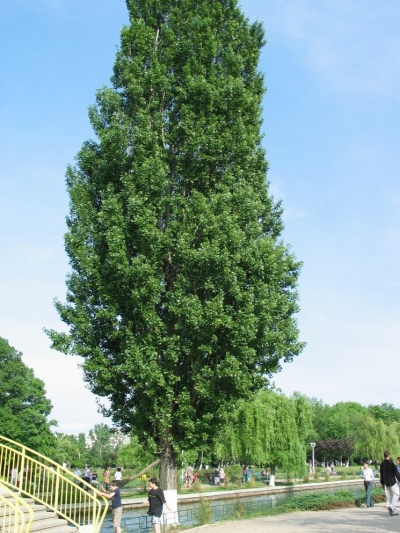
Columnar giants are quite easy to distinguish from other representatives of the Willow genus - the crown of the plant is very neat, narrow and clearly elongated upward. The structure of the tree resembles a pillar or a column - strong branches that grow at an angle of 90 degrees to the trunk provide the shape. After disembarkation, the giant grows fastest for 10-12 years, and then growth slows down.
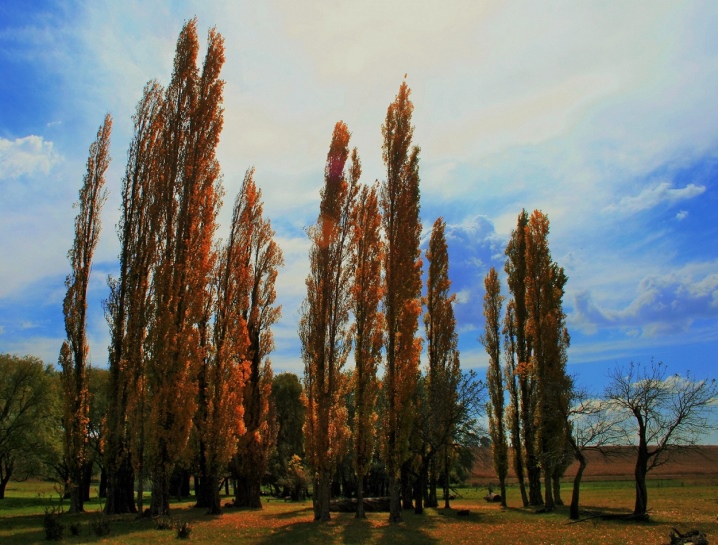
The trunk of a pyramidal plant usually does not exceed 1 meter in girth. The bark of an adult poplar is dark gray, dotted with deep cracks. In young shoots, the coating is elastic and smooth, with a light gray or olive color.
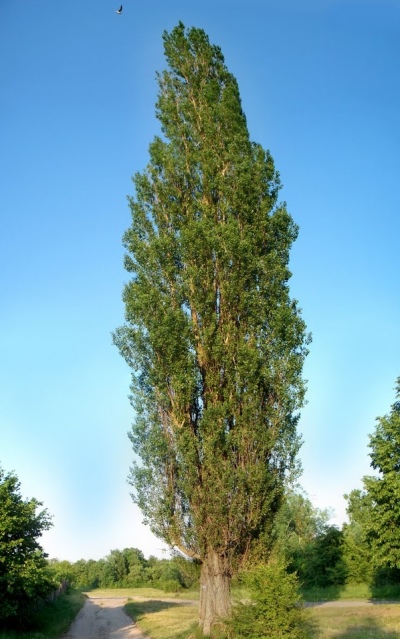
The columnar tree blooms immediately after the buds bloom... The inflorescences consist of many small flowers, in male poplars they are burgundy, and in female poplars they are light milky. In addition, women's earrings are usually 6-8 centimeters longer.

The leaves on the branches have a pronounced triangular shape - the wide base tapers sharply towards the tip. The edge of each blade is like a hand saw - it consists of many sharp teeth. The color of the leaves of the pyramidal poplar is whitish below, and juicy green above. The leaves are attached to the plant with a short flattened cutting, strong and reliable enough to protect the shoots from premature abscission.
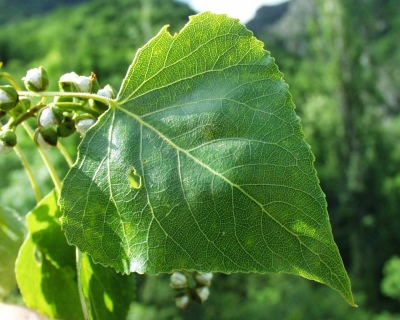
At the end of summer, the columnar crown gradually turns yellow, and by mid-autumn, almost all the leaves fall to the foot of the poplar.
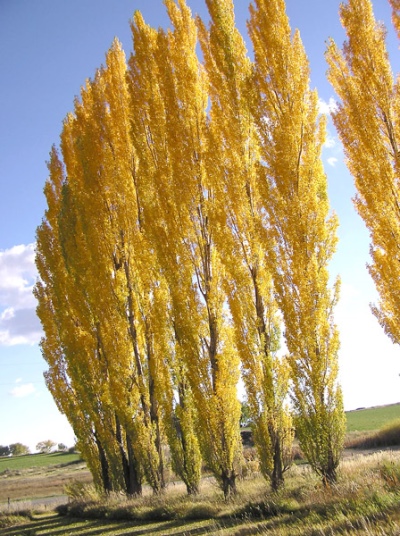
The tree grows well in neutral and slightly acidic soil, sufficiently saturated with moisture and exposed to sunlight. The root system often begins above the soil surface at the base of the plant, then it grows in depth and in breadth. The pyramidal poplar does not have a negative reaction to polluted air in large cities, moreover, the neat crown allows you to grow the tree in a variety of conditions. The columnar tree is very often planted along highways - both outside cities and inside them.
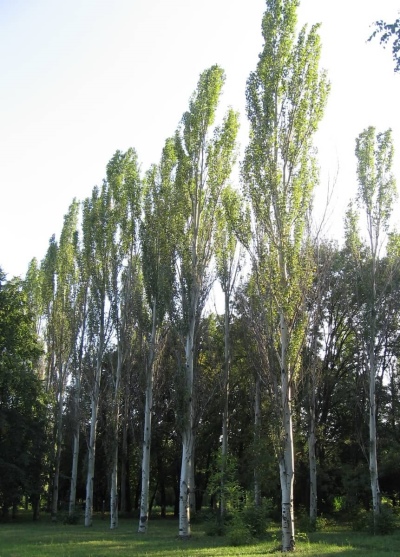
Laurel
The natural environment for the growth of this plant species is quite common - it can be found in Western and Eastern Siberia, in Altai and up to the Dzhungarskiy Alatau. Laurel poplar grows in river valleys and on mountain slopes; it feels great in pebbles and rubble.
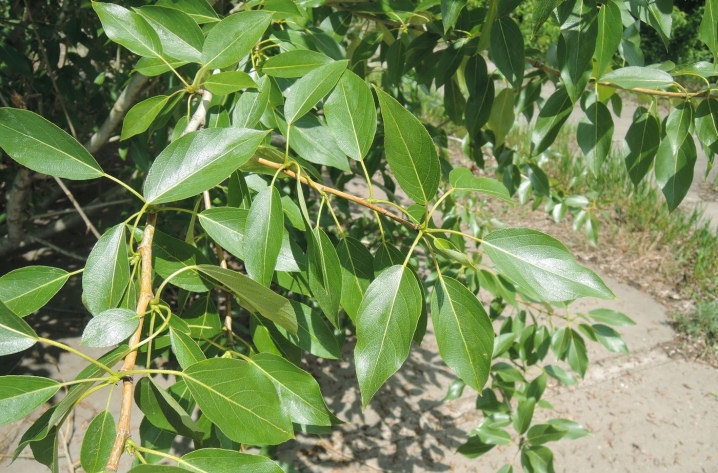
The representative of the Willow family is smaller than its other counterparts - it grows a maximum of 10-20 meters from the ground, the trunk thickness rarely exceeds 1 meter. The crown is spreading and not at all thick - few new shoots appear in a year, therefore there are many gaps among the branches. The structure of the branches is due to the fact that the tree grows in poor soil with limited access to moisture and sunlight.
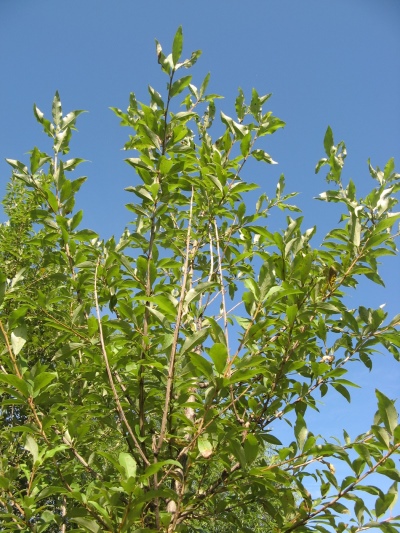
This category of plants is able to survive in rather harsh conditions - long, frosty northern winters will not pose a threat to them. Frequent frosts cause abundant growth of young shoots, so the crown of the tree seems more lush and decorative.
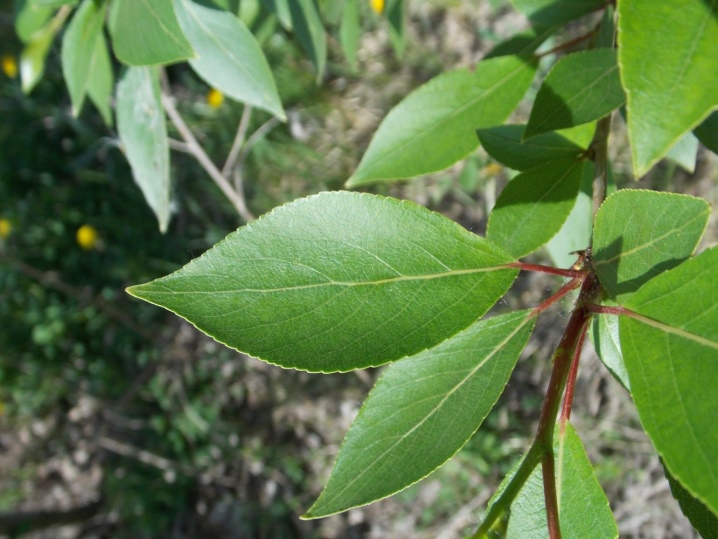
Young shoots are light yellow in color and covered with a layer of fluff. The sprouts have an unusual shape - a ribbed surface is clearly visible on them, which smoothes out after the tree matures. The unevenness of the shoots appears due to special cork growths under the leathery cover - this is a striking distinctive feature of only this type of willow. In the old laurel poplar, the bark becomes gray and cracked. The crown of the tree takes on an oval shape - wider at the base and tapering towards the top.
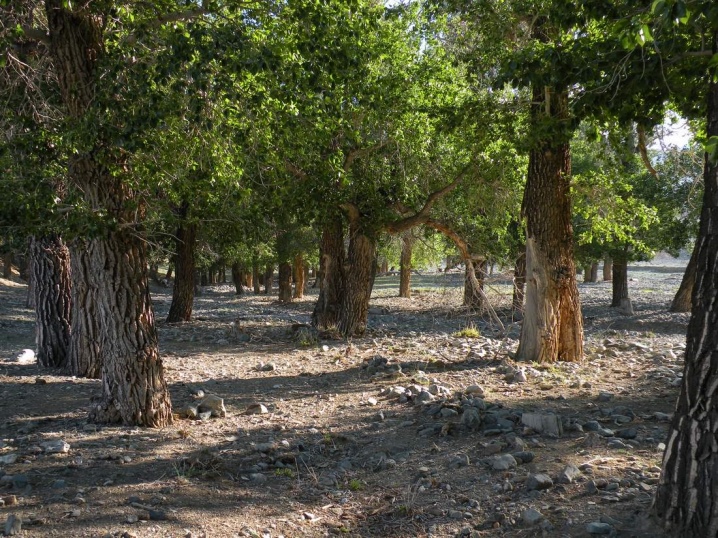
In spring, the plant produces sticky, pleasantly smelling buds - they have an oval-elongated, sharp shape and are colored brownish-green. Large leaves bloom from them - their length is 6-14 centimeters, and their width varies from 2 to 5 centimeters. The plate is cool to the touch, smooth and leathery, takes an elongated oval shape, narrowed towards the end. The foliage of the laurel poplar has an unusual edge - it is finely cut and wavy. Young blossoming buds are sticky, and they are dominated by a pale light green hue, and adult leaves are painted in two colors - white and green.
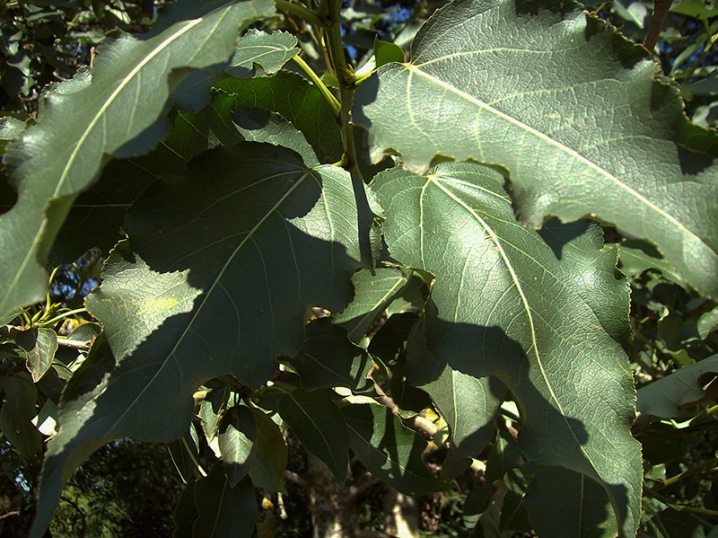
Flowering begins in May; in male representatives, the earrings take the form of a cylinder 3-8 centimeters long. Female trees dissolve small flowers with a yellow pistil on inflorescences. The seeds ripen inside quadrangular balls, which later burst and release the fluff to scatter for many kilometers around.
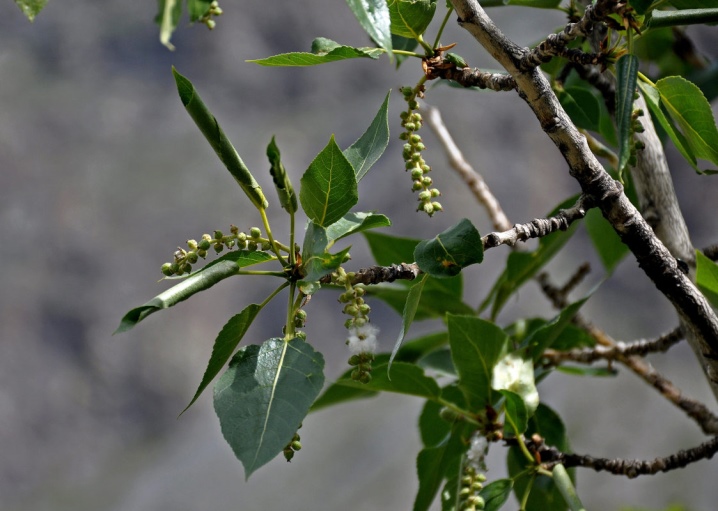
Aspen
This species of Willow reaches 35 meters in height. Under favorable conditions, the lifespan of an aspen poplar can be very long - there is a tree in the world whose age is measured in several millennia.
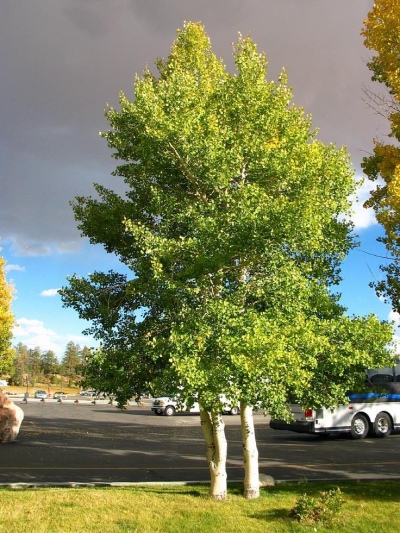
The bark of an adult plant is gray and has small grooves. Young branches are initially covered with a reddish skin, which eventually turns yellowish gray.
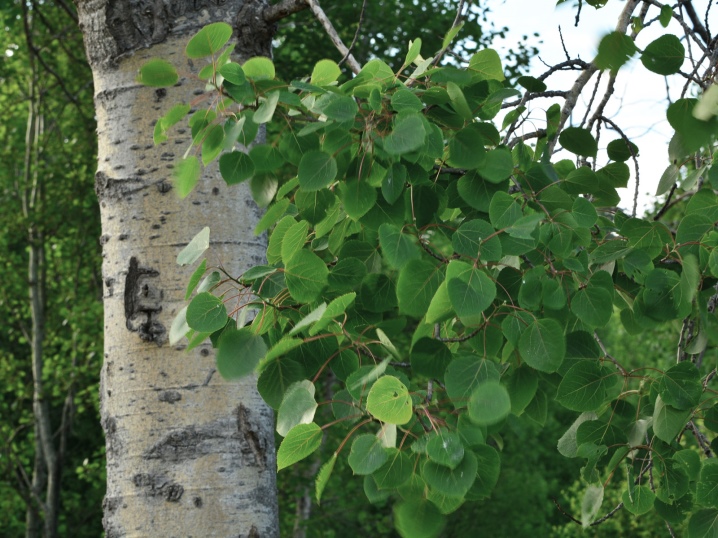
The leaves of the tree are usually small - from 3 to 7 cm, they are dark green above, and greenish-gray below. Like other representatives of willow plants, scented poplar multiplies by releasing catkins, which contain seeds with down.
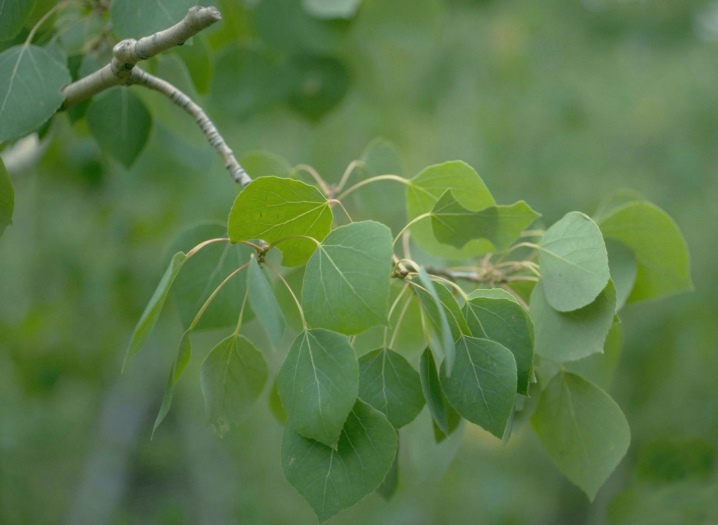
Hybrid varieties
Thanks to the efforts of dendrologists, there are also different hybrid varieties of poplars, we will consider a few of them.
- "Berlin" poplar - is a hybrid of black carp and laurel tree. Perfect for landscaping and forestry. The plant lives best in moist soil; in dry conditions, growth will slow down at least twice.

- "Gray poplar" - a product of a combination of silver poplar and aspen. The hybrid has taken root well in the wild and has spread widely throughout Asia and Europe. The plant develops at a fast pace and can multiply using the roots.
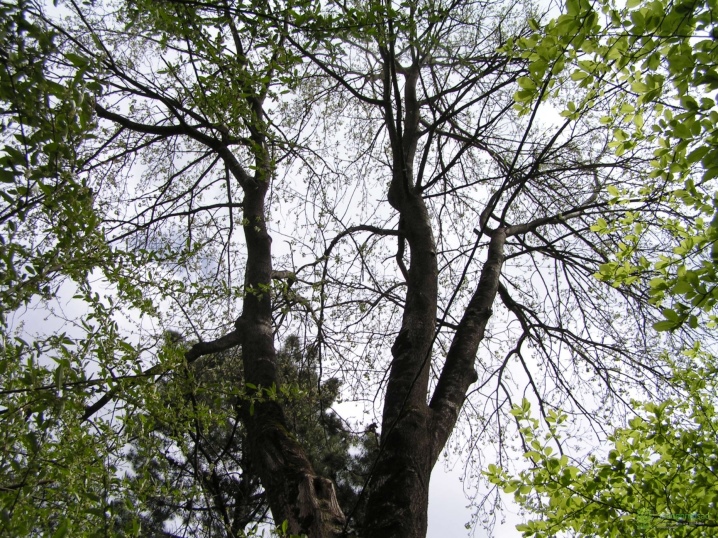
- "Moscow" poplar - crossed from a fragrant and laurel plant. A low tree with an ovoid crown, on the branches of which neat small wedge-shaped leaves grow.
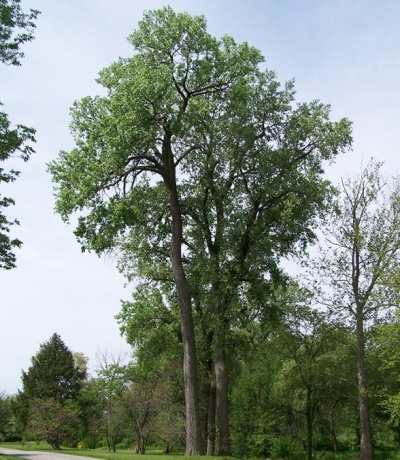
Which one to choose for the garden?
When choosing a poplar for a garden, you need to assess the conditions of its future life - the tree should take root in the soil on your site. Therefore, it would be wise to choose unpretentious varieties that do not require careful maintenance.It is important to determine the volume of the crown and the thickness of the trunk, as well as the shape of the root system. If you responsibly approach the selection of a plant, in the future there will be no unpleasant situations with an overly spreading crown or a lot of fluff.
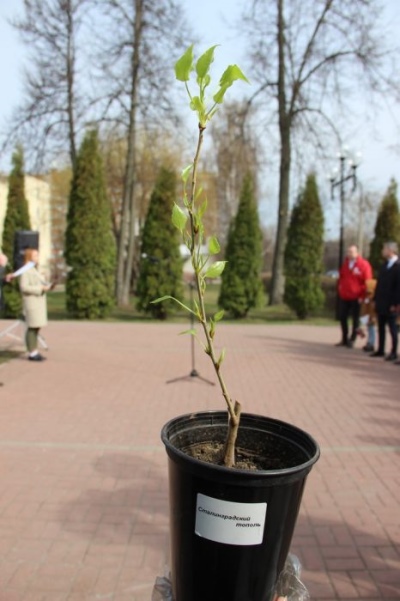
In terms of aesthetics, the most interesting option is silver poplar - its unusual color will give the garden landscape a special zest.
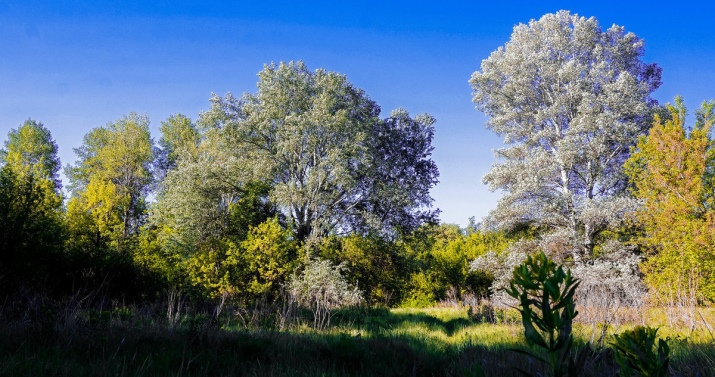
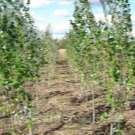
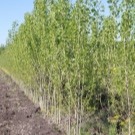
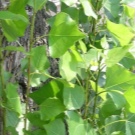
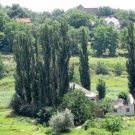
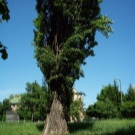



































































The comment was sent successfully.